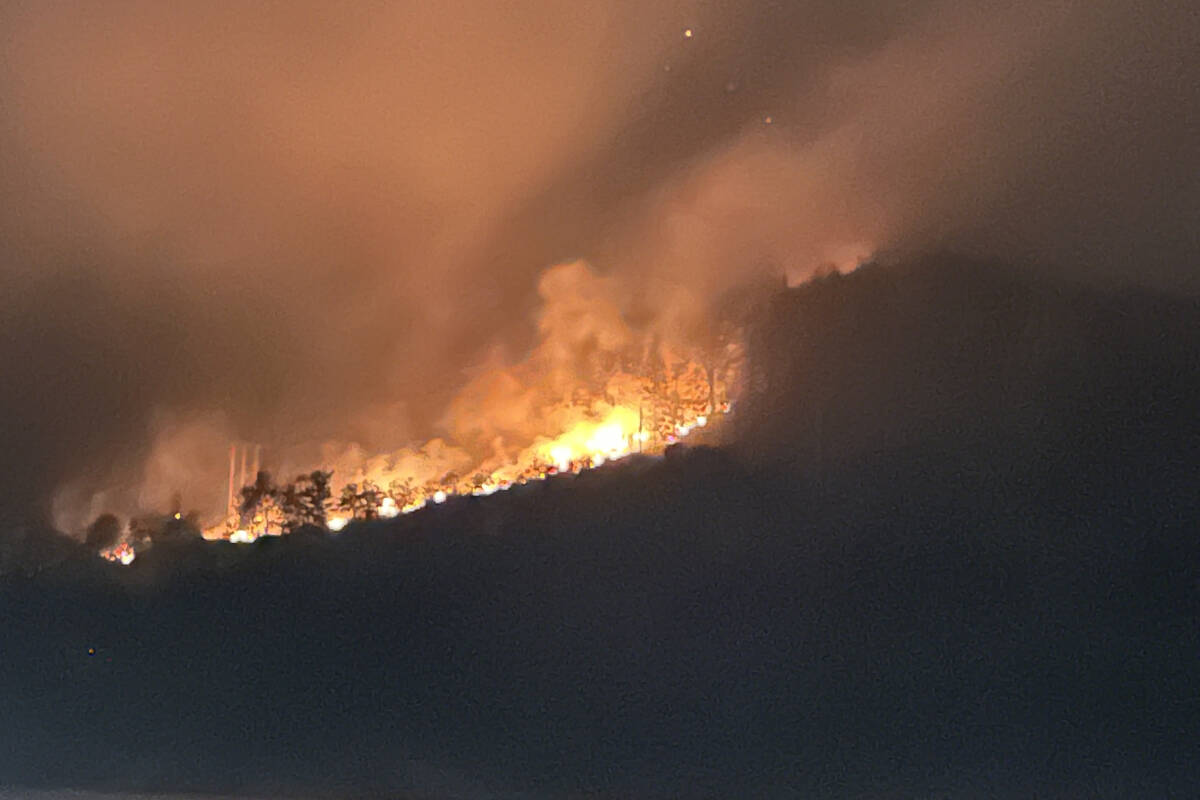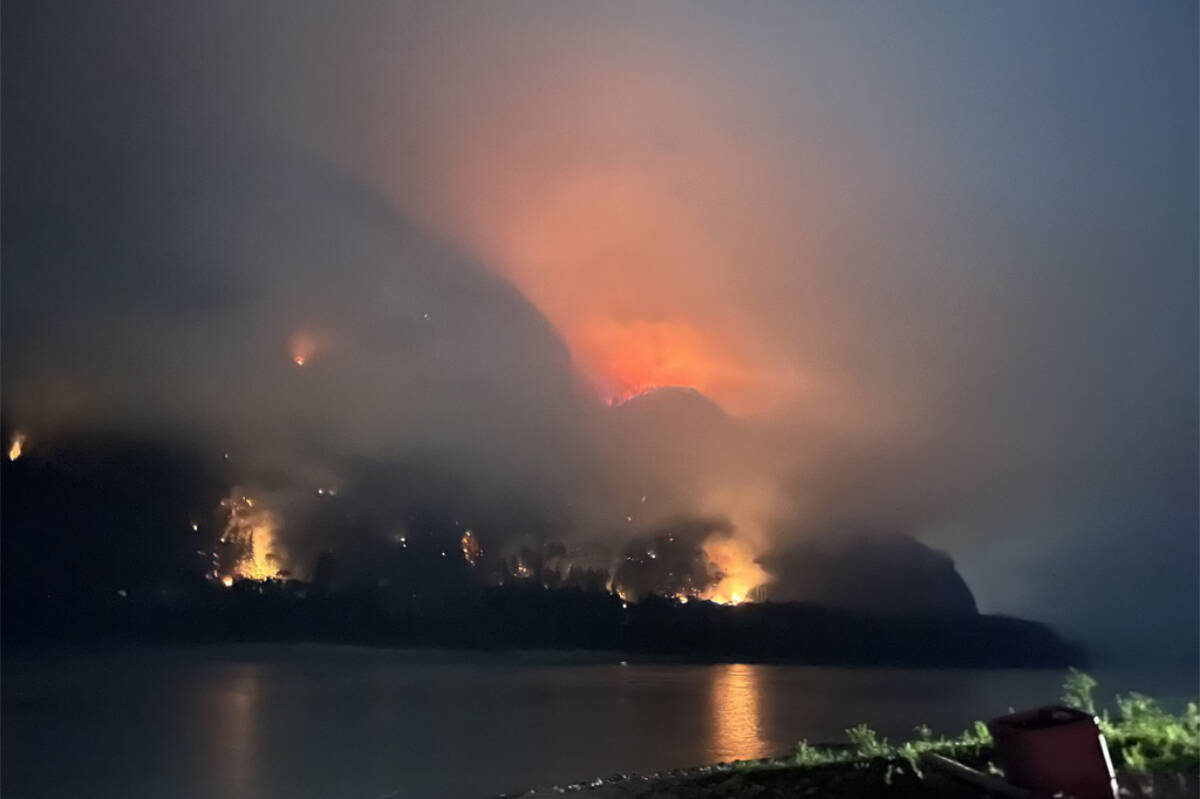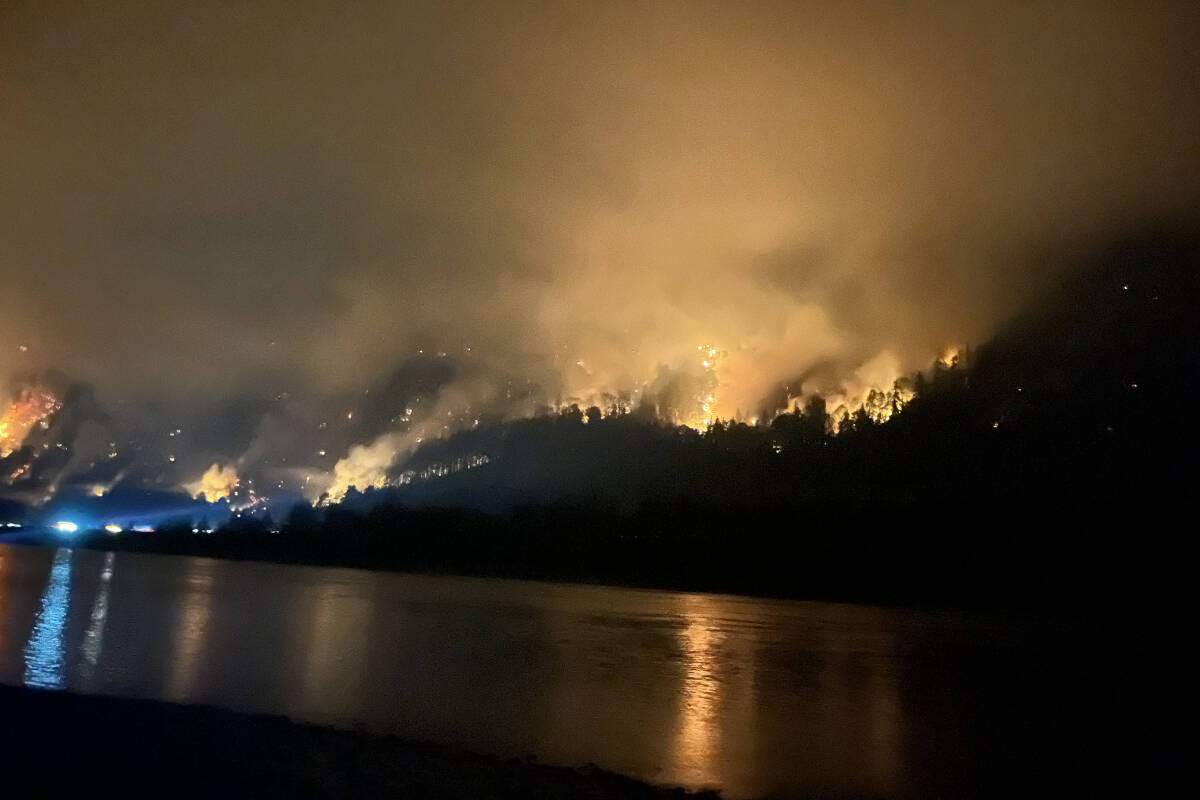A B.C. First Nation says members were left on their own to deal with a recent wildfire emergency near Hope, without much support from surrounding officials.
Members of the Chawathil First Nation say band members were left vulnerable for days, wondering what to do during the Flood Falls wildfire that sparked evacuation orders and closed Highway 1 for hours last weekend. Many of those have health concerns. Reports on social media were that travel time to Chilliwack from Hope could be up to six hours.
According to Chawathil councillors Deanna John and Audrey George, Chawathil was once again forgotten about by the District of Hope during this emergency despite being only a kilometre away from the fire.
Chawathil went onto evacuation alert on Sunday (Sept. 11) and remained on alert until Wednesday (Sept. 14). During this time, they were able to keep band members updated on the wildfire through their own channels of communication and eventually managed to work with Emergency Management BC (EMBC) and First Nations Emergency Support Services to keep everyone safe.
Volunteers were plucked from the community as unofficial ‘fire watchers,’ and air purifiers were eventually obtained for almost all residences in Chawathil.
However, John, who is also the director of operations of Chawathil, says she tried to contact the District of Hope once she knew about the fire. She says it was difficult to get a hold of the district and speak with their emergency contact person about updates.
“When this first started I did reach out to the EMBC workers that I’m connected to and I asked them, ‘who do we connected with in Hope that we know is on the EOC for town of Hope?’,” says John. “And we could not get that information. And when the alerts [were sent] we were not included in the Hope district. We felt that we were a single entity out on our own.”
John says this is not the first time that Chawathil has been left out of the conversation during an emergency. Last year, the band felt ignored by the District of Hope during the floods and weren’t included in the community’s thank-you speech.
“We weren’t really getting the response we were looking for with the town of Hope…It was pretty hard trying to get answers on everything.”
This dismissal, says John, was especially frustrating now considering the proximity of the fire to the Chawathil reserve; about 200 band members live about four kilometres from the fire’s location, by the mountain and river. Many band members have significant health concerns — such as being on dialysis, heart conditions, and severe asthma — that would have made transport urgent, if the blaze had reached them. The issue of transport was especially concerning when Highway 1 was closed, eastbound between Chilliwack and Hope, on Sept. 11 and traffic was being directed to Highway 7 past the Chawathil reservation’s entrance.
“We were looking at our members with major health issues. What it would look like, for the golden hour response time, because I know they are short staffed with ambulances and everything. So we were pushing for our people to be moved out of our community right away and placed down in the lower valley,” says John.
“We weren’t really confident that traffic could get through. We kept hearing that it was taking six hours from Chilliwack just to get to our community…one band member [made] it to us in four and a half hours.”
During Highway 1’s closure, John says they also had problems with people trespassing through Chawathil and relieving themselves by the stop sign near their entrance.
The 545-hectare wildfire is now under control and all orders and alerts have been lifted.
“It was really scary on our end because the Hope Brigade Days and baseball tournament was going on and a lot of our members were there,” says George who is also the emergency operations director. “We had people away from our community. So, we were quite scared that if the fire stared in our community everyone wouldn’t be around or know [about it].”
Both councillors say that the fire has made it clear that a better system of communication needs to be in place between the communities.
Additionally, John says that relying on websites and social media for updates can’t be the only options. There are still people in each community who don’t have access to the internet, can’t afford a television, or aren’t social media literate. Not having a way to access updates can be scary for them, says John.
@KemoneMoodley
kemone.moodley@hopestandard.com
Like us on Facebook and follow us on Twitter.





